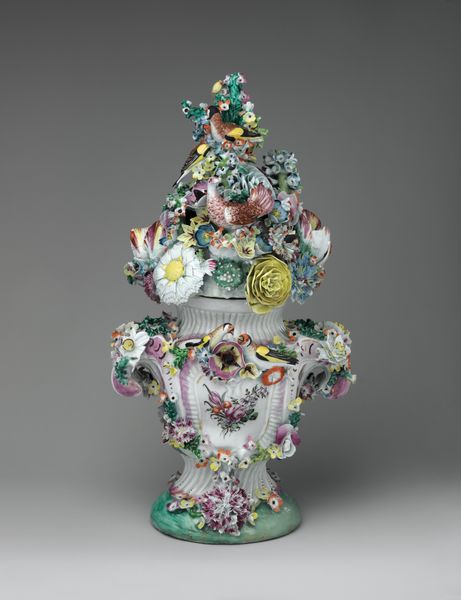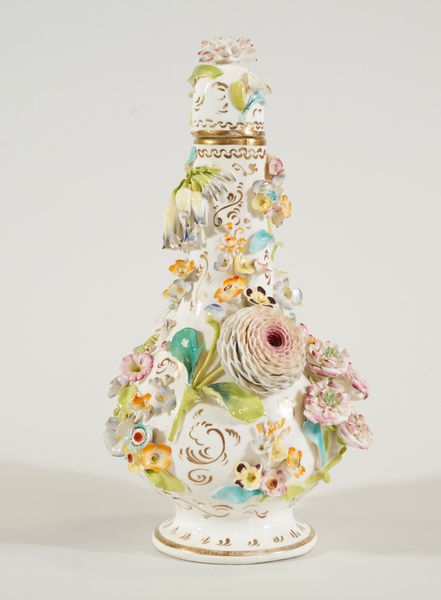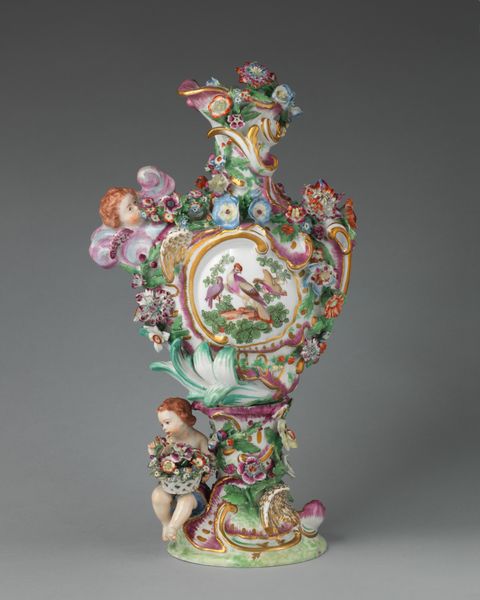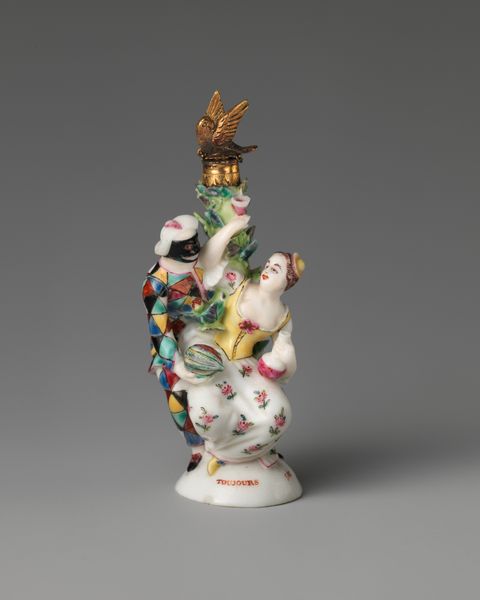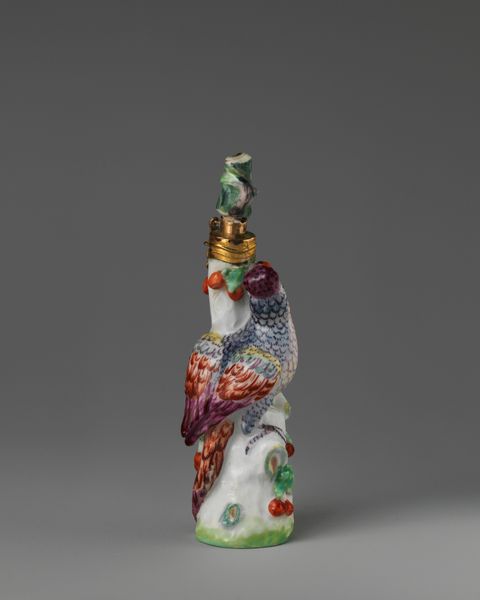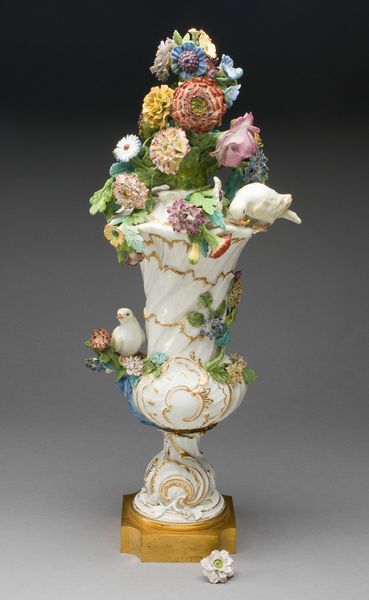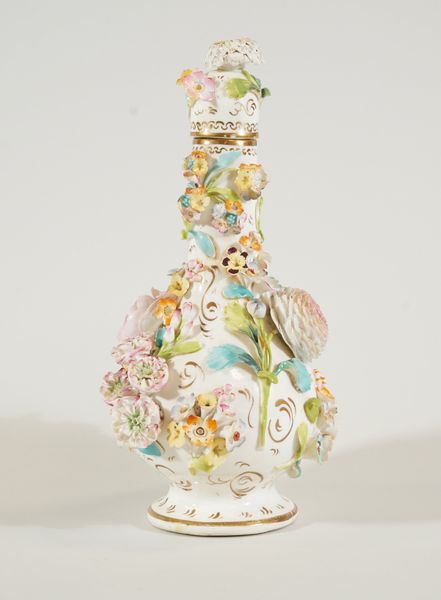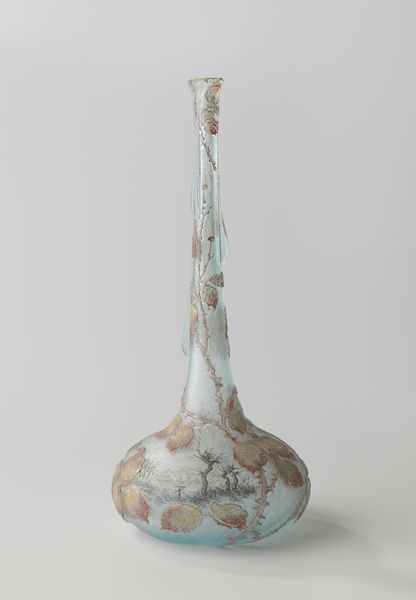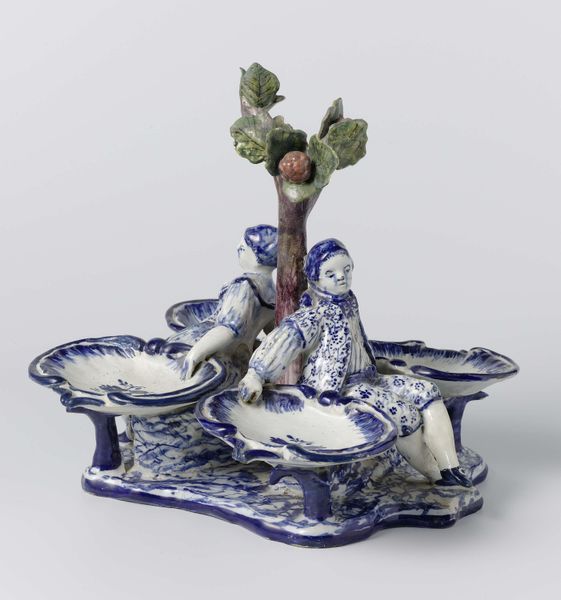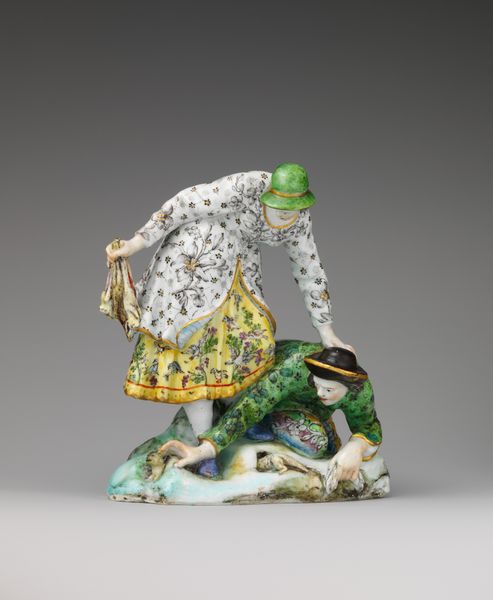
ceramic, sculpture
#
ceramic
#
sculpture
#
decorative-art
#
erotic-art
#
rococo
Dimensions: Fountain: 47 × 38 cm (18 1/2 × 15 in.); Basin: 22.8 × 45 cm (9 × 17 3/4 in.)
Copyright: Public Domain
This exuberant wall fountain and basin was made at the Sceaux Pottery and Porcelain Factory in France, sometime in the late 1700s. It’s made of faience, a tin-glazed earthenware that allowed the makers to mimic the bright colours and fine detail of porcelain, but at a lower cost. The piece bursts with marine imagery. Note the way the figures of Neptune and Amphitrite are seamlessly integrated with shells, waves, and monstrous faces. The form is exuberant, almost cartoonish, but it was conceived to be a luxury item, and would have required a great deal of skill to produce. Each element would have been individually cast in a mold, then assembled, painted, and fired. Pieces like this speak to the growing commodification of the decorative arts in the 18th century. The Sceaux factory catered to an aristocratic clientele, but the rise of faience meant that a wider segment of the population could access elaborate tableware and decorative objects. This fountain is a reminder that even seemingly frivolous objects are embedded in complex social and economic histories.
Comments
No comments
Be the first to comment and join the conversation on the ultimate creative platform.
